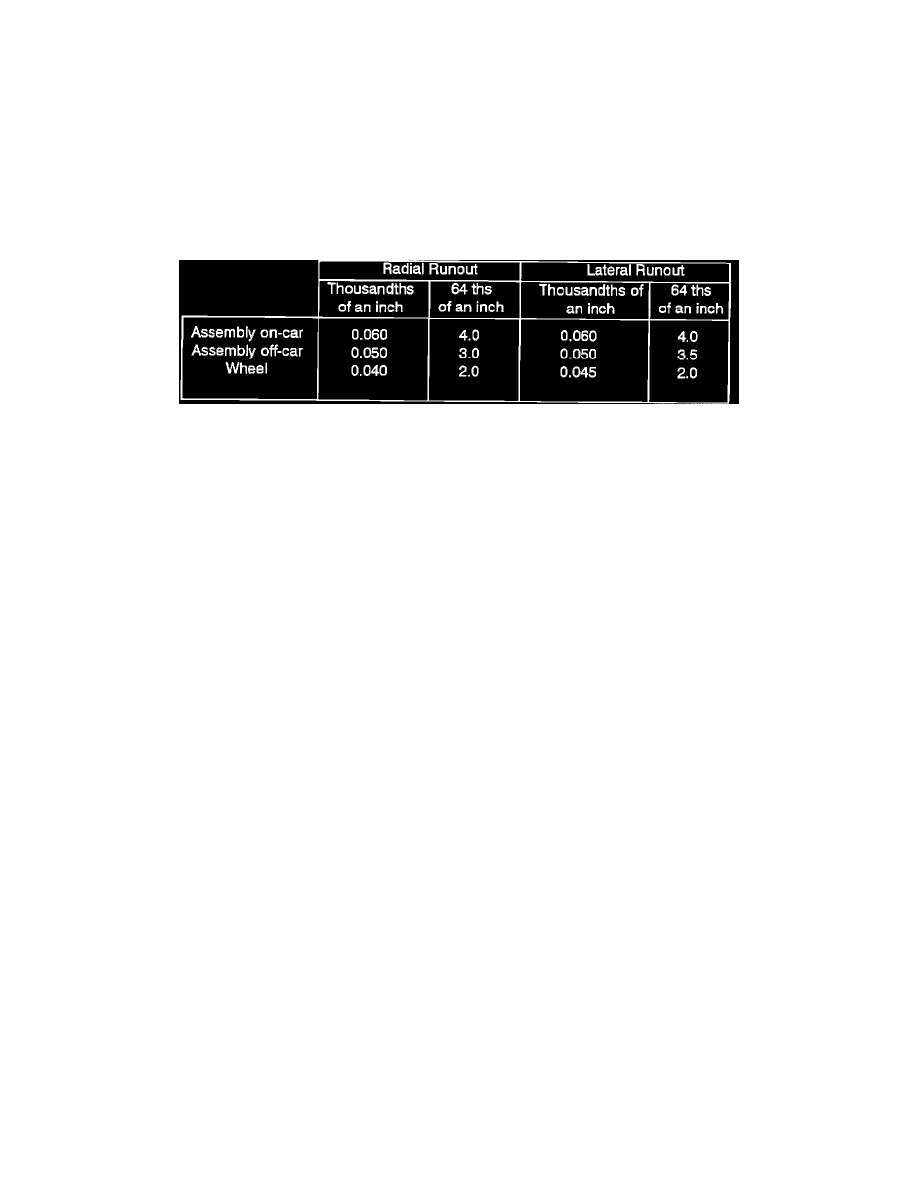Elantra L4-1595cc 1.6L DOHC (1993)

5.
Accelerate the engine slowly. Rapid acceleration could cause a wheel weight to fly off, or cause the vehicle to vibrate off the pick-up supports.
6.
NEVER attempt to spin a DRIVE wheel assembly with a balancer spinner because lack of lubrication or cooling could damage the driveline, the
transaxle, and the spinner.
7.
Do not stop the wheels by using the vehicle's brakes while the vehicle is on the pick-up stands. Place the transaxle into neutral before decelerating.
8.
Never exceed an indicated 80 mph when both wheels are spinning, or 40 mph if one of the two wheels is blocked (not rotating).
III. Runout Measuring Procedure
Maximum Runout guidelines
NOTE:
Please use the runout guidelines (see illustration) only when the runout specification from the service manual is not available.
Measurement Procedure:
1.
Warm up the tires prior to taking measurements to eliminate slight flat spotting. This may be done during a road test. Newly installed tires usually
do not require warm up.
2.
Raise the vehicle on a lift so that all four positions can be measured. If measurements are to be taken off the vehicle, mount each assembly on a
dynamic balance machine.
3.
Mark a stud bolt for future reference when reinstalling the original assembly position on hub. Also, mark the vehicle position on each tire/wheel
assembly.
4.
Place the runout gauge in position to take either the radial or lateral measurement. Rotate the assembly (or wheel) to find the low spot. Adjust the
gauge to read zero. Rotate the assembly once to ensure that the low spot has been located and that the dial returns to zero.
5.
Rotate the assembly slowly but constantly and note the amount of runout variance from zero on the dial of the gauge. Locate and mark the high
spot.
If there is a large difference in runout measurements from on-vehicle to off-vehicle, the runout variation is due to either a vehicle condition (for example,
bolt circle or hub runout) or the fit between the vehicle and the wheel.
If measured runouts are not within the specifications or guidelines, perform the match mounting procedure.
IV. Match Mounting Procedure
Match mounting is a technique used to reduce radial or lateral runouts on tire/wheel assemblies. Excessive runout may be a source of vibration
complaints and match mounting may minimize the runout. There are two ways to accomplish match mounting: 1) By positioning the tire on the wheel; 2)
By positioning the assembly on the hub.
